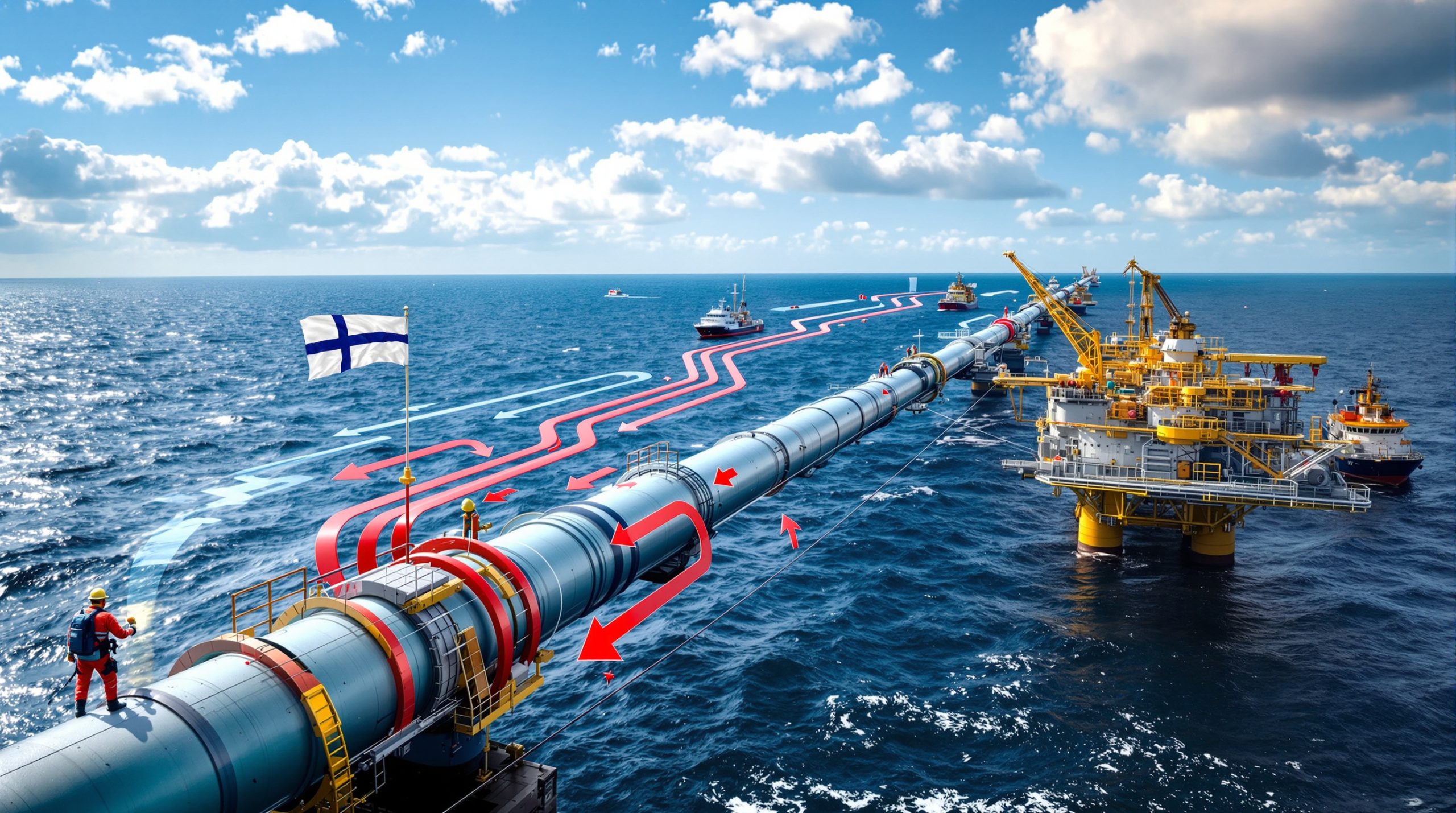What Happened in Caterpillar's First Quarter 2025 Earnings Report?
Key Financial Results
Caterpillar Inc., the world's largest construction equipment manufacturer, reported its first quarter 2025 financial results with adjusted earnings per share of $4.25, falling short of the analyst consensus expectation of $4.32. This market dynamics explanation represents the company's first significant shortfall in recent quarters, highlighting emerging challenges across multiple segments of its business.
The company experienced notable declines in machinery sales volumes in key markets, with particularly concerning performance in North America and parts of the Asia-Pacific region. Revenue decreased by approximately 3.5% year-over-year, reflecting broader economic headwinds affecting customer purchasing decisions across construction, resource industries, and energy sectors.
Profit margins faced considerable pressure during Q1, with operating margin contracting by approximately 120 basis points compared to the same period in 2024. Company executives cited persistent raw material inflation, particularly in steel and resin components, alongside elevated transportation costs as significant factors eroding profitability.
Market Reaction and Significance
Following the earnings announcement, Caterpillar's stock price dropped nearly 6.8% in the first day of trading, reflecting investor concerns about the economic implications beyond just the company itself. This sharp reaction underscores Caterpillar's position as what Bloomberg journalists Jacob Lorinc and Joe Deaux describe as "a bellwether to the health of the global economy."
The Q1 2025 results stand in stark contrast to Caterpillar's performance throughout 2024, when the company had consistently met or exceeded earnings expectations. This reversal has raised questions about whether this represents a temporary stumble or the beginning of a more prolonged downturn in heavy equipment demand.
Investor sentiment across the broader heavy equipment sector turned notably cautious, with peer companies like Deere & Company and Komatsu also experiencing stock price declines of 4.2% and 3.7% respectively, despite not having reported their own quarterly results yet. This contagion effect highlights the market's view of Caterpillar as a leading indicator for industrial economic health.
Why Did Caterpillar Miss Earnings Expectations?
Declining Machinery Demand
The most significant factor behind Caterpillar's earnings disappointment was a substantial decline in equipment sales volume. North American dealer deliveries decreased by approximately 5.2%, while Asia-Pacific regions (excluding China) saw even steeper declines of nearly 7.3%. Europe, Middle East, and Africa (EMEA) regions demonstrated relative resilience with a more modest 2.8% decline.
Particularly concerning was the performance in Caterpillar's large earthmoving equipment category, which experienced a 9.1% year-over-year decline in unit sales. This category includes high-margin products like large wheel loaders and excavators that typically generate substantial profit contributions.
Customer purchasing patterns have shifted noticeably toward repair and maintenance over new equipment acquisition. Caterpillar's services segment showed relative strength with a 1.2% revenue increase, suggesting customers are extending the lifecycles of existing equipment rather than investing in fleet expansion.
Dealer inventory management presented additional challenges, with North American dealer inventories increasing by approximately $315 million during the quarter despite softening end-user demand. This inventory buildup could potentially constrain future equipment orders as dealers work to reduce excess stock levels.
Global Economic Headwinds
The construction industry faced significant headwinds across multiple regions. In the United States, residential construction remained weak with housing starts declining 7.3% in the most recent reporting period. Commercial construction has similarly shown signs of contraction, with architectural billing indexes indicating reduced future project pipelines.
Mining sector investment patterns reflected increasing caution among major miners. Capital expenditure plans for several leading global mining companies have been revised downward by an average of 8.5% for 2025, directly impacting demand for Caterpillar's large mining equipment and autonomous haulage systems.
Energy market fluctuations created additional pressure, with volatile oil prices causing many energy companies to adopt more conservative capital spending approaches. This particularly affected Caterpillar's Energy & Transportation segment, which saw a 4.3% revenue decline as customers delayed investments in new power generation and compression equipment.
Transportation infrastructure projects, which typically drive demand for road building equipment, have also experienced delays in several key markets. Despite President Donald Trump's infrastructure initiatives, actual project commencement rates have fallen below expectations, particularly for large-scale highway renovations.
Cost Pressures and Margin Challenges
Raw material costs continued to create significant manufacturing expense pressures. Steel prices increased approximately 11% year-over-year, while specialized components like hydraulic systems saw cost increases of 7.3%. These material cost escalations could not be fully offset through pricing actions, creating margin compression.
Labor costs presented additional challenges, with manufacturing wage inflation of approximately 5.2% across Caterpillar's production facilities. Skilled labor shortages in specialized manufacturing roles contributed to both direct cost increases and occasional production inefficiencies.
Supply chain resilience showed improvement compared to previous years' disruptions, but persistent challenges remained in semiconductor component availability for the company's technology-enabled equipment. Lead times for certain electronic control modules extended to 14-16 weeks, complicating production scheduling.
Pricing strategy effectiveness declined as market competition intensified in several equipment categories. Price realization contributed only 1.1% to revenue compared to 2.4% in the previous quarter, indicating reduced pricing power as competitors aggressively pursued market share in a contracting demand environment.
How Does This Compare to Industry Competitors?
Heavy Equipment Manufacturer Performance
While Caterpillar's earnings miss has captured headlines, a comparative analysis with key competitors reveals varying performance trends. Komatsu, Caterpillar's primary global competitor, is projected to report more modest volume declines of approximately 3.8% in comparable product categories, suggesting Caterpillar may be experiencing some company-specific challenges beyond industry-wide factors.
Market share shifts have been observed in several equipment categories. In the 20-25 ton excavator segment, Caterpillar has lost approximately 1.2 percentage points of market share over the past year, primarily to Korean manufacturers offering aggressively priced alternatives. However, the company has maintained its dominant position in large mining equipment where barriers to entry remain substantial.
Regional strength variations are notable across manufacturers. While Caterpillar has faced significant challenges in North America, it has shown relative resilience in parts of Latin America where infrastructure development continues at a stronger pace. Conversely, Deere & Company has demonstrated greater strength in domestic agricultural equipment markets despite facing similar pressures in construction.
Competitive positioning in growth markets reveals strategic differences. Caterpillar has placed significant emphasis on sustainable equipment development, including battery-electric options, while some competitors have prioritized technological integration and autonomous capabilities. These divergent strategies may yield different results as market preferences evolve.
Industry-Wide Trends vs. Caterpillar-Specific Issues
Common challenges facing all heavy equipment manufacturers include elevated interest rates impacting customer financing costs, general economic uncertainty delaying capital investments, and skilled labor shortages affecting both manufacturing and customer operations. These systemic factors have created headwinds across the entire sector.
Unique factors affecting Caterpillar's performance include its greater exposure to mining stocks guide and energy markets compared to some competitors, potentially amplifying the impact of commodities cycles. Additionally, the company's extensive dealer network, while typically a competitive advantage, may have contributed to inventory management challenges during this period of demand uncertainty.
Differentiation strategies vary significantly across manufacturers. Caterpillar has emphasized its comprehensive aftermarket service capabilities and parts availability as key differentiators, while some competitors have focused more intensively on initial purchase price competitiveness. In a contracting market, these distinct approaches may yield different financial outcomes.
Technology adoption rates compared to industry peers show Caterpillar investing approximately 4.2% of revenue in R&D, slightly above the industry average of 3.8%. However, the commercial deployment rate of new technologies, particularly in autonomy and electrification, remains comparable across major manufacturers, suggesting no clear leadership advantage in bringing innovations to market.
What Do These Results Reveal About the Global Economy?
Construction Sector Indicators
Commercial construction activity has shown concerning weakness across multiple markets. The American Institute of Architects' Billing Index has remained below the crucial 50-point threshold for three consecutive months, indicating contracting design activity that typically precedes reduced construction spending by 9-12 months.
Residential building markets continue to face challenges from elevated interest rates, with mortgage applications for new construction down approximately 12.5% year-over-year. Despite persistent housing shortages in many urban markets, financial constraints have limited new project starts.
Infrastructure spending patterns show significant regional variation. Western European nations have reduced public infrastructure budgets by an average of 5.3% in response to fiscal pressures, while several Southeast Asian economies continue to expand infrastructure investment by 6-8% annually as part of long-term development initiatives.
Regional construction demand differences have become increasingly pronounced. While North American non-residential construction has contracted, parts of Latin America and the Middle East continue to show resilience, particularly in energy-related infrastructure development. These divergent trends create both challenges and opportunities for equipment manufacturers with global operations.
Resource Industry Health
Mining sector capital expenditure has decreased by approximately 8.5% among major global miners compared to previous projections. This reduction comes despite relatively stable commodity prices, indicating increasing caution about future demand, particularly from China's stimulus impact where economic growth rates continue to moderate.
"The mining equipment cycle typically lags commodity price movements by 12-18 months. Current order patterns suggest mining companies are prioritizing operational efficiency over capacity expansion, a significant shift from their stance 12 months ago." – Mining industry analyst previously quoted by Bloomberg
Energy production investment patterns show a clear bifurcation. Traditional oil and gas capital expenditure has increased modestly by 3.2%, focused primarily on enhancing production from existing assets rather than new field development. Meanwhile, renewable energy infrastructure investment has grown by 11.4%, creating demand for specialized construction equipment.
Commodity price influences on equipment purchases remain complex. While overall commodity price indexes have stabilized, significant volatility in individual materials creates uncertainty for resource companies planning long-term capital investments. This volatility particularly impacts specialized mining equipment orders, which typically involve 12-18 month lead times.
Regional resource development activity levels vary substantially. Australian mining activity has remained relatively robust, supporting equipment demand in that market, while North American mining developments have faced increasing regulatory scrutiny and approval delays, particularly for new projects.
Leading Economic Indicator Analysis
Caterpillar's historical role as an economic bellwether has been well-established over multiple business cycles. Typically, significant declines in Caterpillar's equipment orders have preceded broader economic contractions by approximately 3-4 quarters, making this earnings miss potentially significant beyond the company itself.
Correlation between equipment sales and economic cycles has been particularly strong in construction and transportation segments. The current 5.2% decline in North American dealer deliveries is approaching levels that have historically corresponded with regional economic slowdowns, though not yet reaching the double-digit declines seen before major recessions.
Forward-looking indicators within the earnings report suggest continued challenges ahead. The company's order backlog decreased by approximately 18% year-over-year, indicating potentially softer demand conditions extending through at least the next two quarters.
Potential warning signs for broader economic conditions include the combination of dealer inventory increases alongside declines in end-user utilization rates. This pattern has historically preceded broader industrial production contractions, as it suggests decreasing capacity utilization across multiple sectors that use Caterpillar equipment.
What Is Caterpillar's Strategy Moving Forward?
Management's Response to Challenges
Caterpillar's executive leadership has outlined a multi-faceted approach to navigate current market challenges. The company plans to implement targeted production adjustments at several key manufacturing facilities, reducing output by approximately 7-9% for certain product lines where dealer inventories have become elevated.
Cost control initiatives are being accelerated, with the company targeting $350 million in annual savings through procurement optimization, manufacturing efficiency improvements, and selective workforce reductions. These measures aim to protect margin performance even if volume pressures persist.
Inventory management has become a critical focus area, with the company working closely with its dealer network to implement more dynamic stocking strategies. Dealers in regions experiencing the sharpest demand declines have been directed to reduce inventory levels by 15-20% over the next two quarters.
Production capacity optimization includes temporary suspensions of assembly line operations at two North American facilities and one Asia-Pacific plant. These rolling suspensions are designed to reduce finished goods inventory while maintaining workforce capability for a potential market recovery.
Innovation and Product Development Focus
Despite current market challenges, Caterpillar has maintained its commitment to new equipment technologies. R&D investment remains at approximately 4.2% of revenue, focused particularly on emissions reduction, electrification, and digital capabilities.
Autonomous and electric equipment development continues to progress, with the company's battery-electric excavator prototypes now entering field testing with selected customers. Initial performance data indicates these machines can deliver approximately 85% of traditional diesel performance while reducing operational costs by up to 25% in appropriate applications.
Digital services and connectivity enhancements represent another significant focus area. The company has expanded its Cat Connect technology to include predictive maintenance capabilities across a broader range of equipment models, with data showing a 23% reduction in unplanned downtime for connected machines.
Sustainability-focused product innovations align with increasing customer environmental requirements. Caterpillar has accelerated the development of its hydrogen-capable generators and dual-fuel engine technologies, positioning the company to address both current market needs and anticipated future regulatory requirements.
Geographic Market Strategy
Emerging market growth initiatives have been recalibrated in response to varying regional economic conditions. The company has increased investment in parts of Southeast Asia where infrastructure development remains robust, while adopting a more cautious approach in regions experiencing economic uncertainty.
Mature market retention strategies focus on maximizing aftermarket service revenue and parts sales, which typically demonstrate greater resilience during equipment replacement cycle downturns. The company has expanded its remanufacturing capabilities and introduced more flexible service contract options to support this focus.
Regional sales force deployment has been adjusted to align with current market opportunities. Resources have been shifted toward mining and energy sectors in regions where these verticals continue to demonstrate investment strength, while reducing coverage in segments experiencing more significant downturns.
Dealer network optimization efforts include enhanced inventory management systems and more selective new equipment stocking. The company has implemented advanced analytics to help dealers identify optimal inventory levels based on regional economic indicators and historical equipment utilization data.
How Should Investors Interpret These Results?
Short-Term Investment Considerations
Technical analysis of Caterpillar's stock price movement following the earnings miss shows a breach of several key support levels. The 6.8% single-day decline brought the stock below its 200-day moving average for the first time in 14 months, potentially signaling further technical weakness ahead.
Trading volume patterns reveal significant institutional selling pressure, with volume exceeding the 90-day average by approximately 2.7x on the day following the announcement. This elevated volume suggests potential repositioning by major holders rather than merely short-term trading activity.
Options market reaction includes a 32% increase in put option open interest at strike prices 10-15% below current levels, indicating growing hedging activity against further declines. The implied volatility in Caterpillar options has increased to 28%, substantially above the 22% long-term average.
Short-term price targets from major analysts have been revised downward by an average of 11.2% following the Caterpillar earnings miss. However, the diversity of revised targets (ranging from $195 to $245) demonstrates significant uncertainty about near-term performance prospects.
Long-Term Investment Outlook
Historical performance during similar economic conditions provides useful context. During previous cycles where Caterpillar experienced comparable earnings misses, the stock typically underperformed the broader market for 2-3 quarters before stabilizing and eventually recovering alongside improving economic conditions.
Dividend sustainability remains strong despite current challenges. The company's dividend payout ratio stands at approximately 35% of earnings, providing substantial buffer against potential further earnings weakness. Caterpillar has increased its dividend for 29 consecutive years and management has reiterated commitment to this track record.
Capital allocation strategy emphasizes maintaining balance sheet strength during uncertain market conditions. The company has temporarily reduced its share repurchase program by approximately 40% compared to previous guidance, prioritizing financial flexibility while continuing to invest in strategic growth initiatives.
Long-term growth potential in core markets remains intact despite current headwinds. Global infrastructure requirements continue to expand, with an estimated $97 trillion in infrastructure investment needed globally through 2040. This underlying demand provides a foundation for eventual recovery in equipment markets.
Risk Factors to Monitor
Potential for further demand deterioration represents the most significant near-term risk. Leading indicators within dealer reporting systems suggest equipment utilization rates have declined for four consecutive months, potentially signaling additional weakness ahead in replacement demand.
Competitive threats to market position have intensified, particularly from Asian manufacturers offering lower-priced alternatives in medium-sized equipment categories. Market share monitoring in these vulnerable segments will be crucial to assess competitive resilience.
Regulatory and compliance challenges continue to evolve, with emissions standards for off-road equipment tightening in multiple jurisdictions. While Caterpillar has invested heavily in compliance technologies, these requirements add approximately $1,800-$2,500 to the production cost of typical medium-sized equipment.
Supply chain vulnerability has decreased compared to previous years, but remains a concern in specialized component categories. The company has reduced single-source suppliers by 23% but maintains dependence on certain critical components where alternative sources remain limited.
FAQ: Caterpillar's Earnings Miss and Market Impact
What were the most significant factors contributing to Caterpillar's earnings miss?
The primary factors behind Caterpillar's earnings shortfall were declining machinery sales
Want to Invest in the Next Major Mineral Discovery?
Discovery Alert's proprietary Discovery IQ model instantly identifies significant ASX mineral discoveries, turning complex data into actionable investment opportunities. Explore why major discoveries can lead to exceptional returns by visiting Discovery Alert's dedicated discoveries page and begin your 30-day free trial to secure your market advantage.




